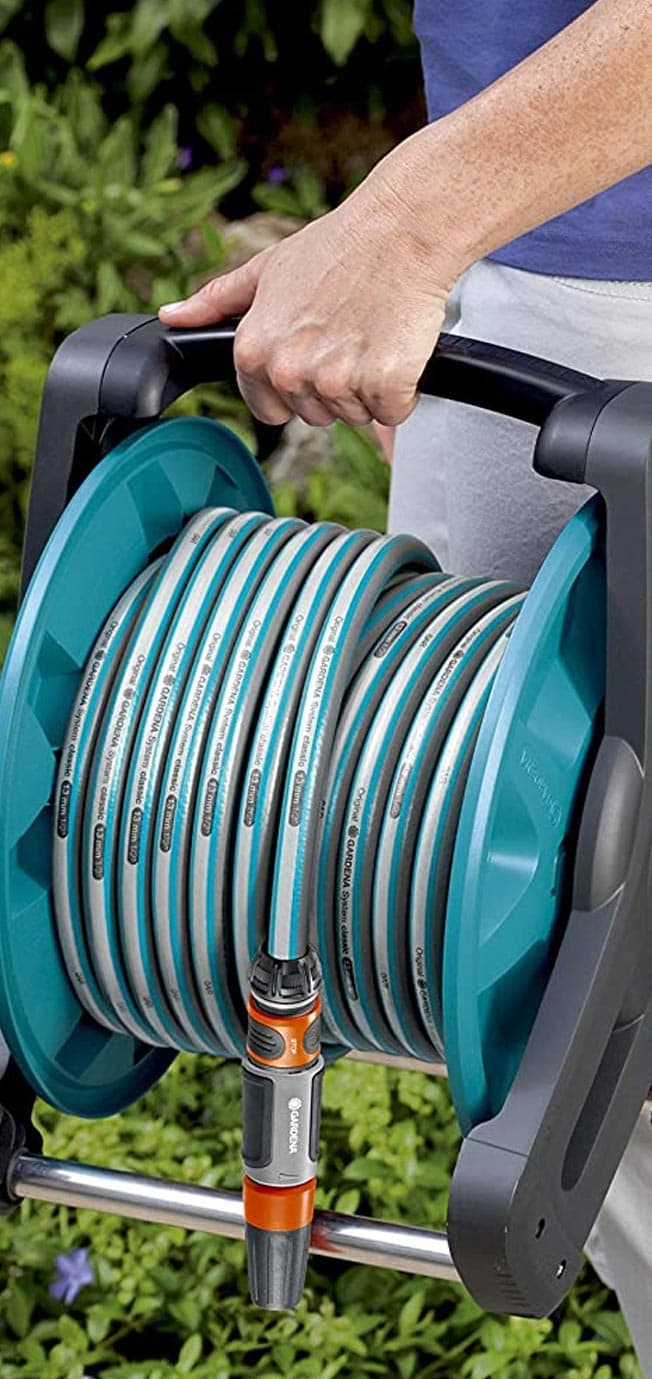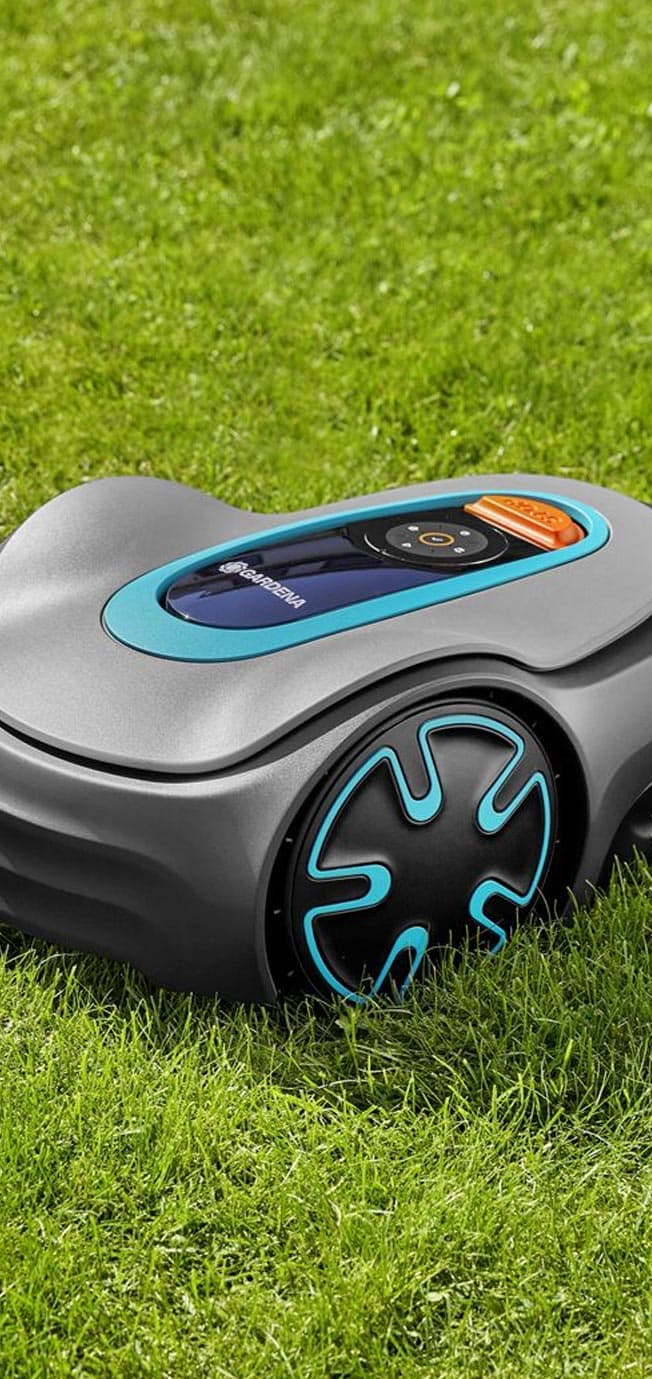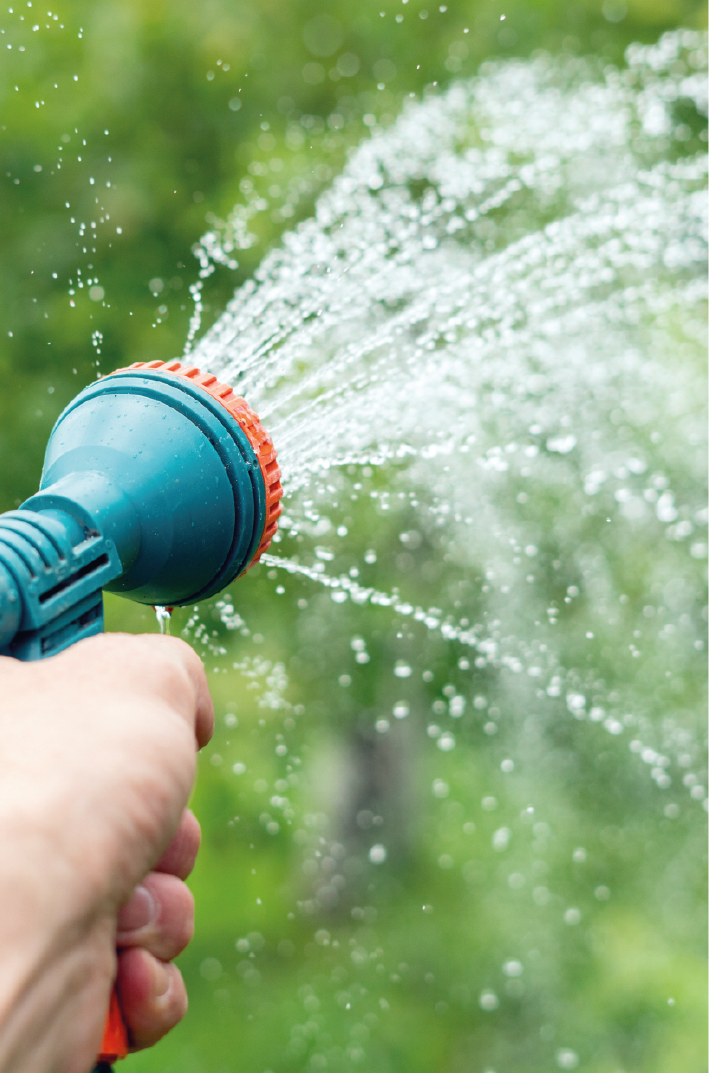Robot mowers
Robot mowers
Some like nothing better than to actively work on their lawn themselves, while others prefer to rely on robotics to do the job. Hermie has the right solution for both types of gardeners. ‘Ordinary’ lawn mowers for one and robotic lawn mowers for the other.
A robotic lawn mower is also known as a robotic mower or mowing robot. Robotic lawn mowers allow you to maintain a perfect lawn with minimal effort. This is because grass cutting is fully automated, saving you a lot of time and effort. Also choose to buy a robotic mower and have your grass maintained daily.
How to choose a robotic lawn mower?
1. Lawn area
The first variable that determines which robotic mower gets access to your garden is the area it needs to work on. What area a robotic mower can handle is determined by the combination of battery capacity, cutting width and software. So before making a decision, be sure to measure your lawn area. In our range, you will find robotic mowers for a maximum area of 250 m2 up to 2000 m2. In addition, the height difference also plays a role. Each robotic mower has a maximum slope. Even the entry-level models often have a slope of 25% - quite steep already! -, the more advanced models can overcome a slope of up to 35%.
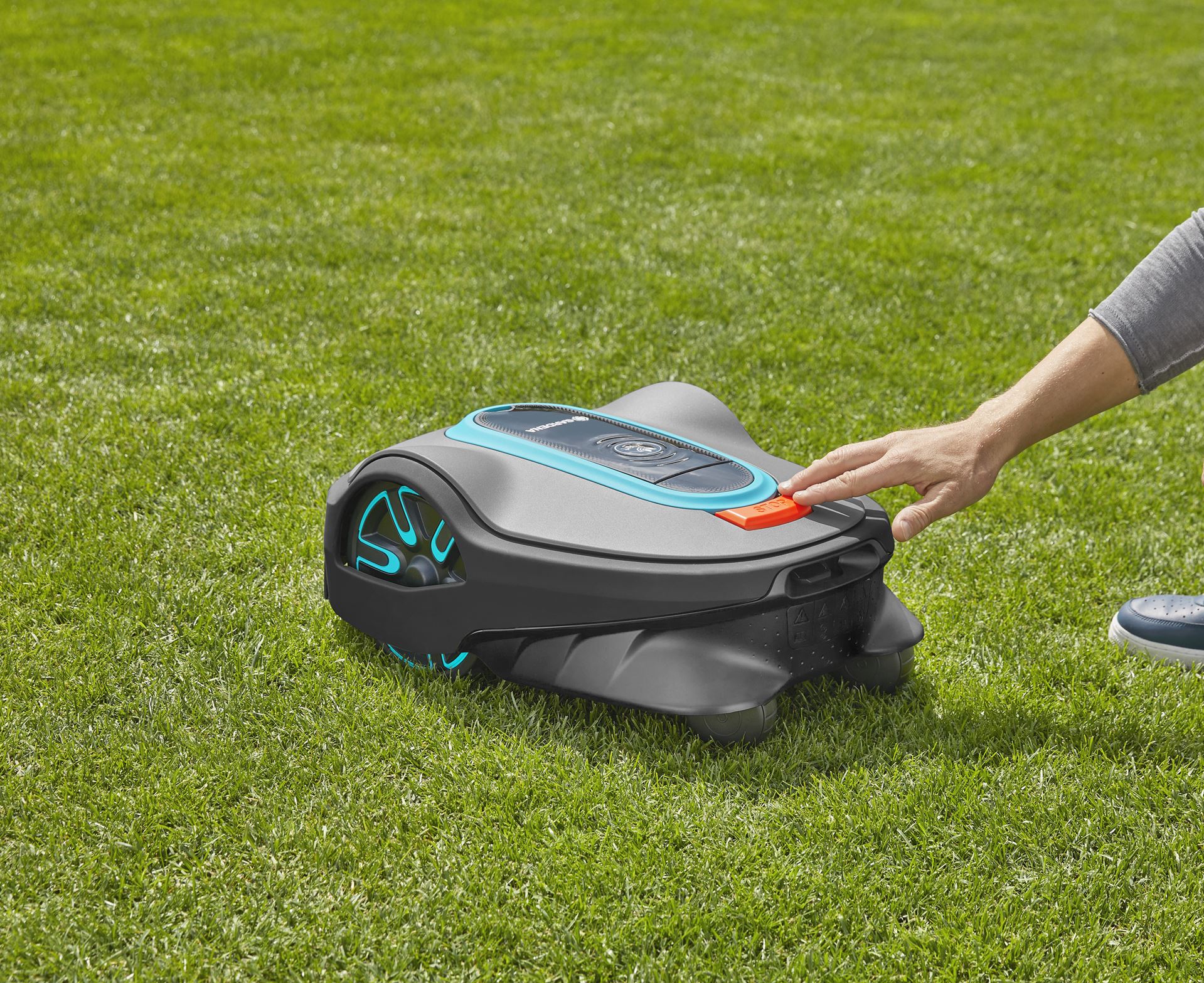
CAUTION: If the grass is too long, you risk overloading your robotic mower's motor. For the first cut after winter, it may be useful to have a regular lawnmower as a backup.
3. Battery capacity
Battery capacity is especially important for slightly larger gardens. The average robotic mower needs about 3 hours to fully mow your lawn, but this obviously depends on the lawn area. If your robotic lawnmower's battery runs out, it will just keep going after the battery has been fully recharged.

Tip from Marcel
Let the robotic mower mow in the morning during hot summer days. Mowing during heavy heat is not only bad for your lawn but also for the battery.
4. Control with or without app
Of course, you can control your robotic mower on the unit itself. Every grass robot has a control panel on which you can navigate through the programmes and fully adjust your robotic mower. The vast majority of robotic mowers can also be controlled via an app. With some types this is done via BlueTooth and you do have to be within a certain radius of the robotic lawnmower, with others you can even control your robotic lawnmower from abroad to set mowing programmes and the like.
5. Additional functions for your convenience
Additional functionalities can also play a decisive role. Rain sensors, for example, ensure that the robotic mower returns to the charging station if it detects rain. Impact sensors prevent your grass robot from driving into or over obstacles. Thanks to lift sensors, your robotic lawn mower knows when it is lifted and can send a notification to your mobile phone and trigger an alarm. Thieves won't stand a chance this way. With some models, you also need a PIN code to make the mower work after it has been lifted. With many Gardena robotic mowers, you can set which areas of your garden to be mowed when, how often and how intensively or even not at all.
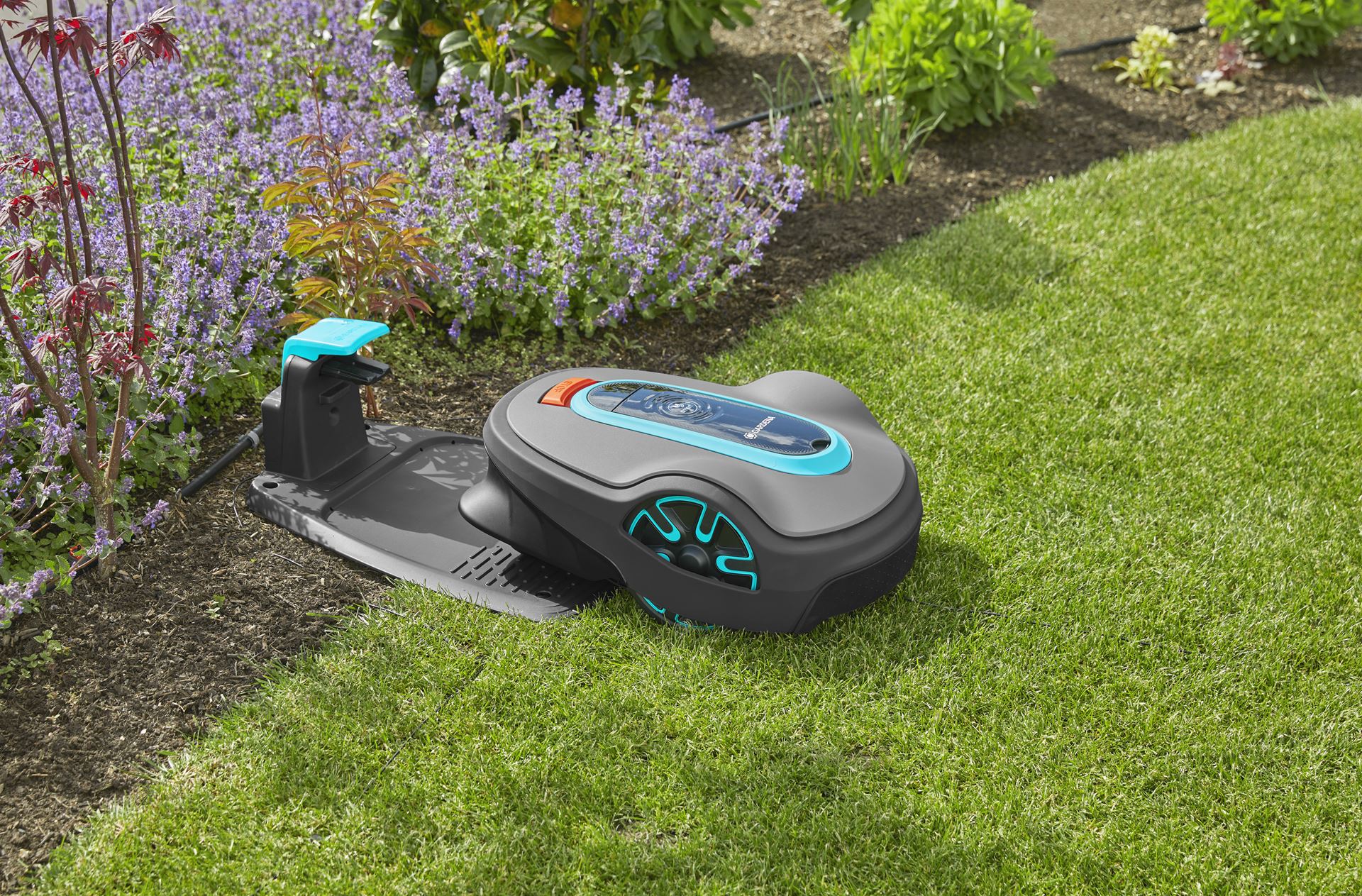

Tip from Marcel
Run your robotic mower only during the day. This is because at night, hedgehogs and other nocturnal animals appear in the garden. Although robotic lawnmowers have impact sensors, many hedgehogs still fall prey to robotic lawnmowers.
How does a robotic lawn mower work?
A robotic lawnmower automatically drives the grass and is powered by an electric motor that gets its energy from a battery. You mark off the area the robotic lawnmower needs to cover with boundary wire or perimeter wire. The robotic mower cannot cross this and, moreover, it uses the boundary wire as a base to find its way back to its charging station. Thanks to impact sensors, obstacles are mapped and the robotic mower can drive past them. When the robotic mower's battery is low, it automatically drives back to the charging station.
You place the charging station in the garden near a wall socket. It should be on a flat surface and preferably not in the sun. Place the boundary wire along the edge of the area to be treated. Especially obstacles such as ponds should be well demarcated with the boundary wire. You clamp the perimeter wire with the corresponding clamps. You connect the ends to the charging station. If you want to scarify the lawn in between, dig in the wire 20 cm.
A robotic lawn mower does not have a collection tray, so it immediately doubles as a mulcher. The grass is cut extra fine and this is immediately natural fertiliser. The mulch falls in between the blades of grass where it composts into a kind of natural fertiliser.
Maintaining your robotic mower
Weekly check
- Turn the robotic mower on its side after you have engaged the machine lock to avoid accidents.
- Check that the cutting blade is still sharp enough. A blunt blade breaks the grass rather than cutting it, which can damage it.
- Use a soft cloth to remove dirt from the housing and clean the cutting blade with a brush. Grass clippings stuck deep inside the housing can be removed with a long skewer.
Storing lawn robot for winter
- After the last mowing, let your robotic mower's battery recharge fully once more. This prevents a deep discharge during winter and is better for your battery.
- Make sure the robotic mower is switched off and do a more extensive check than the usual weekly check.
- If necessary, replace the cutting blade.
- Clean the housing and all parts you can easily disassemble with a cloth.
- Cover the charging station to protect it from winter.
- Store the robotic mower in a dry, frost-free area.







